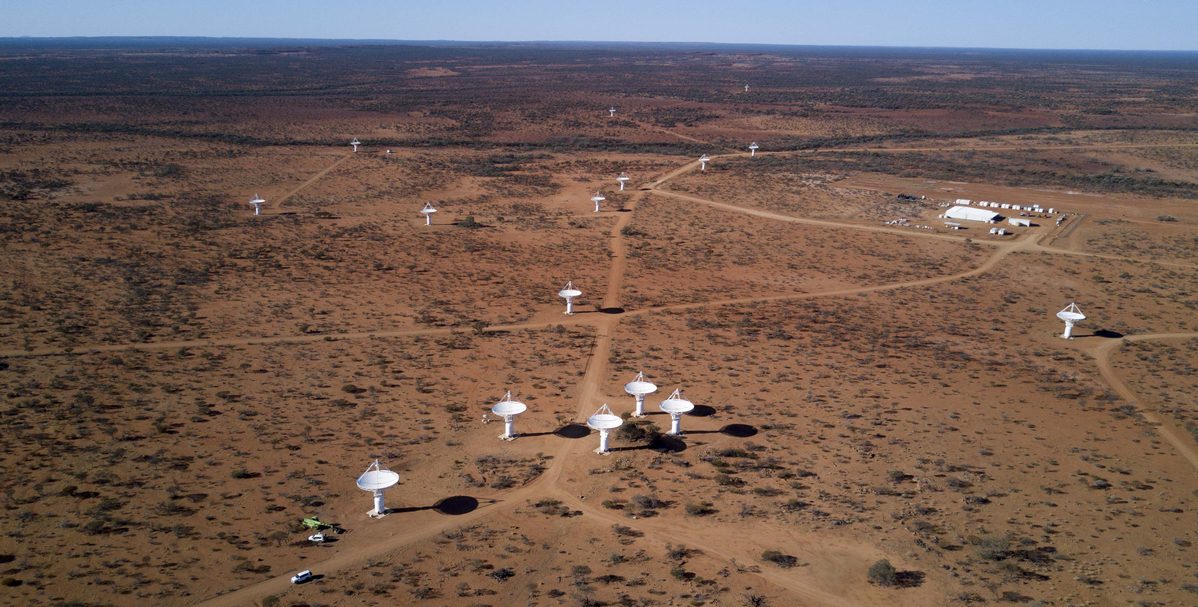Australian Square Kilometre Array Pathfinder (ASKAP)
The Australian Square Kilometre Array Pathfinder (ASKAP) telescope is a new 36 element radio telescope, located at the Murchison Radio-astronomy Observatory (MRO) in Western Australia.
ASKAP’s unique feature is the phased array feed (PAF) receivers on each of its 36 antennas. Each PAF features 188 receive elements in a checkerboard arrangement, tuned to provide optimal performance in the range 700 – 1800 MHz and a large simultaneous field of view at 1.4 GHz. This wide field of view facilitates large surveys of 30 square degrees (150 times the size of the full moon) in a single image – enabling astronomers to discover tens of millions of galaxies and improve our understanding of the evolution and structure of the Universe.
The PAFs generate huge amounts of data. Approximately one peta operation per second, executes 24/7, along with 200 terabits per second to compute the output products of ASKAP. This is a factor of about 100 times faster than traditional radio astronomy systems. Radio signals are converted into a digital format for processing at the MRO central processing facility where the data rate is reduced by a factor of 100, to 40 gigabits per second. The data is sent to the Pawsey Super-Computing Centre in Perth, for further processing and imaging. ASKAP data will be available globally.
ASKAP is powered by a 1.6 MW solar array, a lithium-ion battery that can store 2.6 MWh, and four diesel generators. It is the first hybrid-renewable facility to power a remote astronomical observatory in the world. CSIRO engineered world-first RFI shielding around the battery to contain the radio-frequency interference generated by the system.
ASKAP is designed and built by CSIRO, Australia’s national science agency. The MRO is owned and operated by CSIRO. We acknowledge the Wajarri Yamaji as the traditional owners of the Observatory site.
